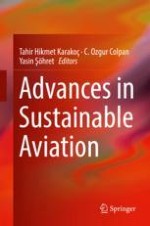2018 | OriginalPaper | Buchkapitel
17. Greenization Factor of a Turbojet Engine
verfasst von : Yasin Şöhret, T. Hikmet Karakoç
Erschienen in: Advances in Sustainable Aviation
Aktivieren Sie unsere intelligente Suche, um passende Fachinhalte oder Patente zu finden.
Wählen Sie Textabschnitte aus um mit Künstlicher Intelligenz passenden Patente zu finden. powered by
Markieren Sie Textabschnitte, um KI-gestützt weitere passende Inhalte zu finden. powered by
